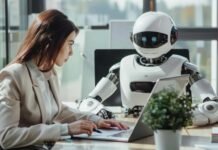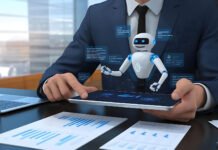The HR function stands at a pivotal crossroads today. The rapid maturation of AI in hiring is no longer about early adoption or experimental pilots. It’s about a strategic mandate: to build smarter HR from job description to offer.
For C-suite leaders, this isn’t just a tech upgrade—it’s a fundamental rethinking of how organizations define, attract, and close with top talent. The focus shifts from process automation to outcome optimization. From reactive HR to predictive, proactive workforce orchestration.
Smarter HR Starts with Smarter Questions
Why stick with static job descriptions when roles evolve faster than org charts can keep up? How is it that, despite using electronic recruitment technology, the aspect of time-to-fill is high?
Smarter HR through job description to offer starts with reframing hiring as a decision-making engine, not an administrative funnel. The problem with the old views of who wins, why they win, and where to find the same kind of people is overcome by the fact that AI in hiring smarter HR systems provides data-driven details on such matters.
Productive HR practices reflect product development attitudes: iterative, data-driven and user-centred, and we get the actual change.
Job Descriptions That Think for Themselves
The current job description is not a tasteless list of actions and provisions anymore. JDs produced by AI are live learning resources. They take in the market trends, consider the history of businesses with regard to performance figures, and gaps regarding the trend of the business needs in terms of skill sets.
An example: one international telecom company applies the AI to update job descriptions every week according to the competitor activities on the market and the changes occurring in the company’s projects. This will enable them to remain competitive in the talent markets that are based on speed and accuracy.
In this case, AI does not substitute human touch; it enhances it, giving businesses a rough draft, rather than copying and pasting boilerplate.
Sourcing Talent with Intelligence, Not Just Reach
Traditional sourcing methods flood recruiters with volume, not quality. AI in hiring, from job description to offer flips the model by leveraging talent intelligence platforms. These systems identify passive candidates, map career trajectories, and even assess cultural fit based on historical success factors.
In 2025, smart HR teams use AI to source beyond the obvious—looking at adjacent roles, gig talent, and even cross-industry shifts. Think of it as moving from searching for a title to seeking potential.
This evolution isn’t about reducing recruiter headcount—it’s about giving them X-ray vision.
Screening That Moves Beyond the Resume
Resume parsing is yesterday’s AI. Today, real-time screening models analyze video interviews, voice modulation, behavioral patterns, and emotional intelligence markers.
These tools don’t just identify what candidates say—they understand how they say it. One fintech firm reduced mis-hires by 38% using AI that flags inconsistencies between interview tone and resume claims.
Smarter HR knows where the human must step in. AI can shortlist; only people can sense grit, purpose, or long-term alignment.
Making Bias Visible, Not Invisible
One of AI’s biggest promises in HR is fairness—but also one of its biggest risks. Algorithms trained on biased data replicate that bias at scale.
In 2023, several lawsuits targeted hiring AI tools for discriminating against minority applicants. The response in 2025? Transparent models, auditable decision paths, and bias detection engines.
Smart C-suites now demand explainable AI. If the model can’t show why it excluded a candidate, it’s not fit for enterprise.
AI-Led Interviews That Guide, Not Replace
Conversational AI tools today help interviewers in real time as they urge them to ask unbiased questions, use a neutral tone, and make notations of answers that are correct.
These are not replacements for AI. They’re AI copilots.
One example is that a manufacturing organization experienced a 25 percent overall increase in candidate satisfaction scores as they incorporated AI-directed interviews-indicating that order and care are not mutually exclusive.
From Offer to Acceptance—Smarter, Faster, Personalized
The offer stage, which was viewed as the last formality, is regarded as a very important engagement stage. Smart HR platforms that utilize AI in recruitment use predictive analytics to make offer acceptance probability predictions, offer customized packages, and even help to time the offer.
Dynamic compensation models consider skills scarcity, candidate motivation data, and peer benchmarks.
For high-stakes talent battles, this is the difference between winning and losing the hire.
Strategic Takeaways for the Talent Stack
Building AI in hiring from job description to offer requires more than buying the latest tools. It demands architectural thinking.
- Integrate ATS with predictive analytics and CRM-like engagement layers
- Upskill HR teams to become AI interpreters, not just users
- Design data pipelines that ensure feedback loops across sourcing, screening, and
- onboarding
C-suite leaders should champion this integration as a strategic initiative—not a departmental project.
Hiring Better, Not Just Faster
The question isn’t whether AI will shape HR. It already has. The real question is whether your organization will lead that transformation—or lag behind.
AI in hiring, from job description to offer, isn’t about removing the human touch. It’s about making that touch more strategic, informed, and impactful.
Smarter HR isn’t just about technology adoption. It’s about cultural readiness, ethical clarity, and execution excellence.
The future belongs to those who hire like it has already arrived.
Explore Hrtech Articles for the latest Tech Trends in Human Resources Technology












